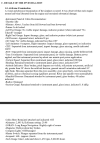AV8R_87
Pre-takeoff checklist
Resurrecting this old thread to add the final report, including an analysis of the gopro footage recovered. I also would like to discuss some of the findings, and see what the rest of you would've done in that situation.
Final report:
https://data.ntsb.gov/carol-repgen/api/Aviation/ReportMain/GenerateNewestReport/102952/pdf
Specialist's report, includes screen shots and narrative:
WPR21LA166 ONBOARD IMAGE RECORDER AND AUDIO TRANSCRIPT - SPECIALIST'S FACTUAL REPORT
The short version (read the report for details):
They land at the accident airport due to a tach failure. After an inspection of the engine compartment, finding no oil leaks or other signs of failure, they elect to continue, with an inop piece of required equipment.
The crash happened at 19:48, with sunset at ~18:55 and end of civil twilight at 18:30. It was a night departure, in a pretty dark part of the country. The report concludes it was spatial disorientation, with the added distraction of an inop tachometer.
Topic for conversation:
The PIC had a total of 10.1 hrs of night time, with no logged night time in the preceding 90 days. While he was not in violation of 61.57(b), had the flight continued uneventfully he would've crossed that line a few minutes later. Without the tach failure and diversion, they would've gotten to their destination before 61.57(b) would come into play, but still in dark conditions, with minimal moon illumination. That's a pretty bad ADM failure, especially when having a commercial certificate and an instrument rating. That flight should've never been planned so close to night time with that level of night experience.
I am grateful to all the experienced pilots who were willing to educate me to the perils of night flying early on, emphasizing the dangers of a black hole night with no moon and lack of cultural lighting. Took a lot more than 10 hours before a moonless night flight over sparsely populated areas was something I'd consider.
A slightly more difficult one to talk about is the decision to depart with the inop tach. Yes, if you look at the rule book it's a slam dunk violation. The closest bit of civilization was about a four miles walk, so overnighting in the plane at an airport in the middle of nowhere was definitely not their first choice. But, rule book aside, with my (limited) knowledge of how a tach is driven from the accessory case, I'd feel a bit uncomfortable about continuing. Yes, it could be the tach itself that failed, or the cable. But what if it's something inside the accessory case, and now there are some chunks floating around, waiting to lodge themselves into something a lot more critical?
So, this is a question for the more knowledgeable people here - what would you have done? Even if you are an A&P, assume that's not the case for the purpose of this conversation.
Final report:
https://data.ntsb.gov/carol-repgen/api/Aviation/ReportMain/GenerateNewestReport/102952/pdf
Specialist's report, includes screen shots and narrative:
WPR21LA166 ONBOARD IMAGE RECORDER AND AUDIO TRANSCRIPT - SPECIALIST'S FACTUAL REPORT
The short version (read the report for details):
They land at the accident airport due to a tach failure. After an inspection of the engine compartment, finding no oil leaks or other signs of failure, they elect to continue, with an inop piece of required equipment.
The crash happened at 19:48, with sunset at ~18:55 and end of civil twilight at 18:30. It was a night departure, in a pretty dark part of the country. The report concludes it was spatial disorientation, with the added distraction of an inop tachometer.
Topic for conversation:
The PIC had a total of 10.1 hrs of night time, with no logged night time in the preceding 90 days. While he was not in violation of 61.57(b), had the flight continued uneventfully he would've crossed that line a few minutes later. Without the tach failure and diversion, they would've gotten to their destination before 61.57(b) would come into play, but still in dark conditions, with minimal moon illumination. That's a pretty bad ADM failure, especially when having a commercial certificate and an instrument rating. That flight should've never been planned so close to night time with that level of night experience.
I am grateful to all the experienced pilots who were willing to educate me to the perils of night flying early on, emphasizing the dangers of a black hole night with no moon and lack of cultural lighting. Took a lot more than 10 hours before a moonless night flight over sparsely populated areas was something I'd consider.
A slightly more difficult one to talk about is the decision to depart with the inop tach. Yes, if you look at the rule book it's a slam dunk violation. The closest bit of civilization was about a four miles walk, so overnighting in the plane at an airport in the middle of nowhere was definitely not their first choice. But, rule book aside, with my (limited) knowledge of how a tach is driven from the accessory case, I'd feel a bit uncomfortable about continuing. Yes, it could be the tach itself that failed, or the cable. But what if it's something inside the accessory case, and now there are some chunks floating around, waiting to lodge themselves into something a lot more critical?
So, this is a question for the more knowledgeable people here - what would you have done? Even if you are an A&P, assume that's not the case for the purpose of this conversation.


